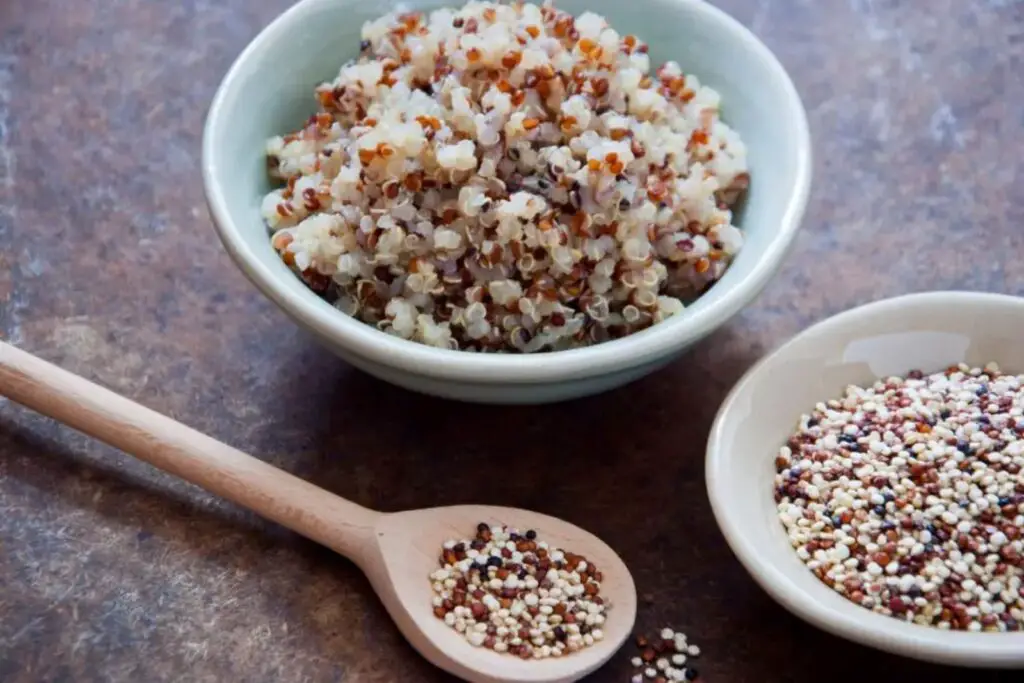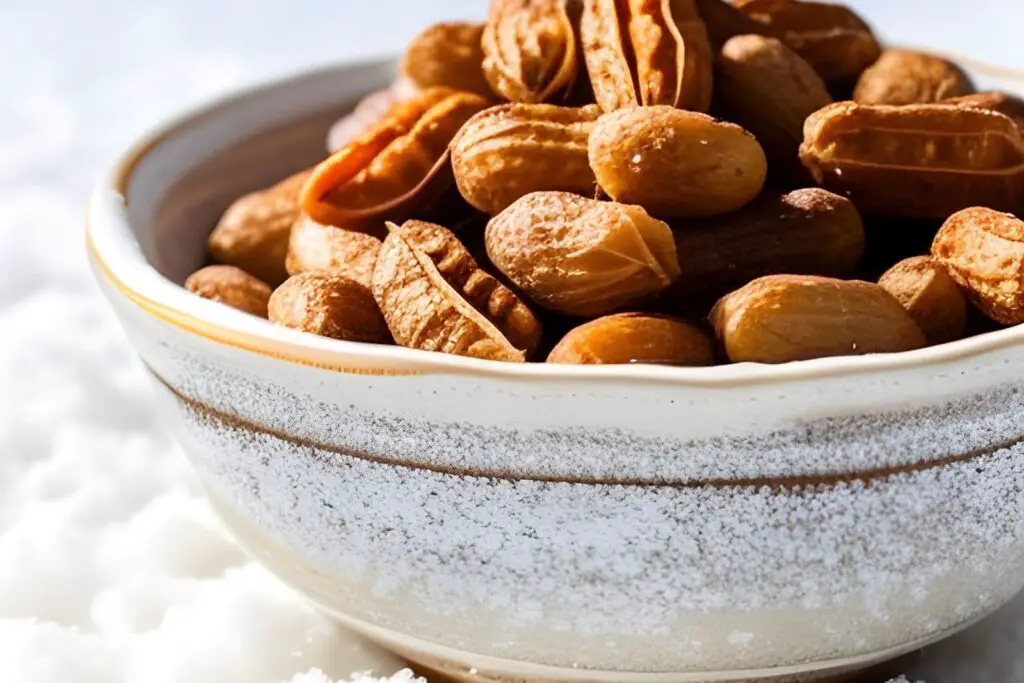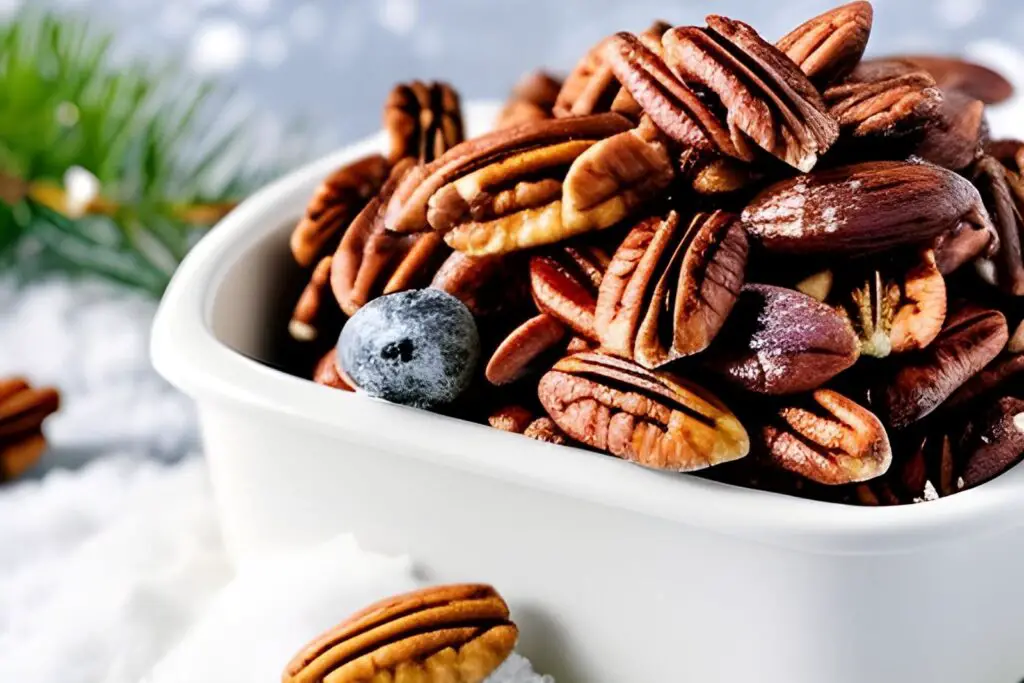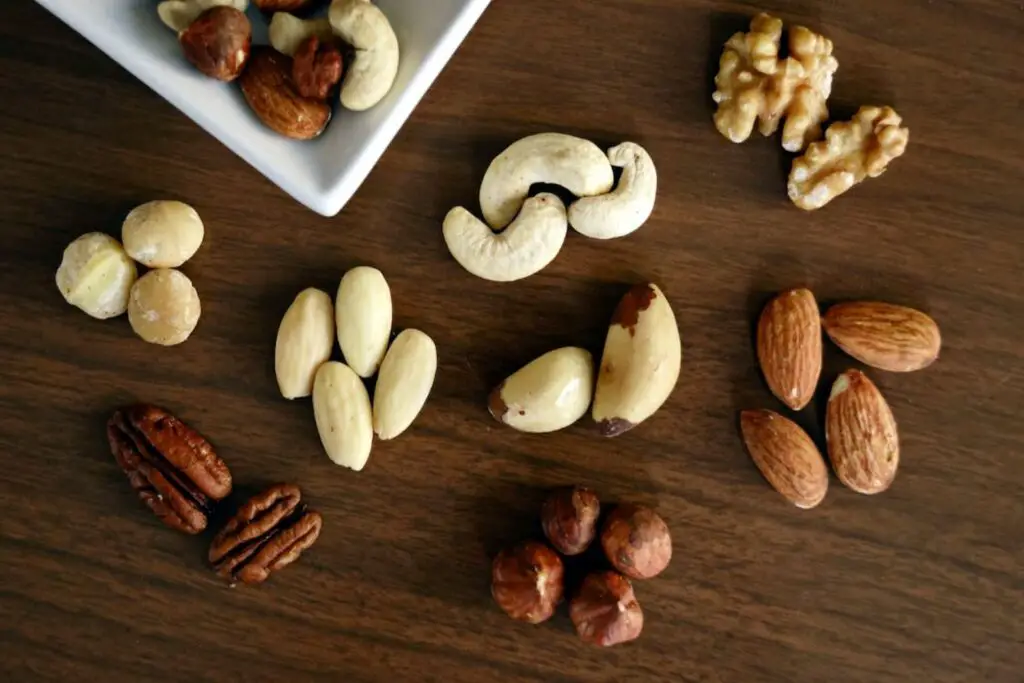
Granola is a type of breakfast cereal or snack made from rolled oats, nuts, seeds, and dried fruits. It is typically mixed with sweeteners such as honey or maple syrup and baked until crispy. Freezing granola is a method of preserving its freshness and extending its shelf life. By properly packaging and freezing granola, you can maintain its texture and flavor, allowing you to enjoy it for a longer period of time.
Here are the simple steps to freeze granola:
Step 1: Allow the granola to cool down completely
After baking your granola, it’s important to allow it to cool down to room temperature before freezing. This step is crucial to prevent condensation and moisture buildup during the freezing process.
When the granola comes out of the oven, it is still warm and retains some residual moisture. If you were to immediately package and freeze it while it’s still warm, the trapped heat and moisture would create condensation inside the packaging. This condensation can lead to ice crystals forming on the granola, affecting its texture and causing it to become soggy when thawed.
By allowing the granola to cool down completely, you give it time to release any excess moisture and reach equilibrium with the surrounding air. This helps to minimize the risk of condensation during freezing. Cooling also allows the granola to become crisp and dry, ensuring it retains its desirable texture and crunchiness after freezing and thawing.
Step 2: Divide into desired portions or leave as a whole
When freezing granola, you have the option to either freeze the entire batch together or divide it into smaller portions. Dividing it into portions can offer several benefits and make it more convenient to use.
By dividing the granola into smaller portions, you create individual servings that are easy to grab and use as needed. This can save you time and effort in the future, especially if you plan to enjoy the granola on a regular basis. Instead of having to defrost the entire batch every time you want a serving, you can simply take out one portion at a time.
Portioning the granola also helps with portion control. It allows you to have a predetermined amount of granola readily available, which can be particularly useful if you’re watching your calorie intake or prefer to have pre-measured servings. This way, you can avoid overeating or the temptation to consume more than you intended.
Moreover, dividing the granola into portions can help prevent unnecessary exposure to air and moisture. Each individual portion can be sealed separately, reducing the risk of freezer burn and maintaining the overall freshness of the remaining granola. This way, you can ensure that the granola stays crunchy and flavorful throughout its storage period.
Consider your preferences and usage patterns when deciding whether to divide the granola or freeze it as a whole. Either way, portioning the granola can offer convenience, portion control, and better preservation, making it easier for you to enjoy this nutritious and delicious snack.
Step 3: Package each portion or the whole granola tightly
To properly freeze granola, it’s crucial to package it tightly using airtight containers or resealable freezer bags. This step helps to preserve the granola’s freshness and prevent freezer burn.
When exposed to air, granola can become stale and lose its crispy texture. Additionally, air carries moisture that can lead to freezer burn, which affects the quality and taste of the granola. Proper packaging prevents both of these issues.
If you’re using airtight containers, fill them with the granola, leaving some headspace to accommodate any expansion that might occur during freezing. Press down gently to compact the granola and remove any excess air trapped within. Then, seal the containers tightly to create an airtight environment. This method works well for freezing larger batches or when you prefer to keep the granola in a rigid container.
Alternatively, you can use resealable freezer bags, which are especially convenient for portioned granola or when you have limited freezer space. Fill the bags with the desired amount of granola, ensuring they are not overfilled to allow for proper sealing. Before sealing, press out as much air as possible from the bag, as trapped air can contribute to freezer burn. Once the air is removed, seal the bags tightly, ensuring there are no gaps or openings.
Both airtight containers and resealable freezer bags create a barrier against air and moisture, keeping the granola fresh and protected during freezing. This way, you can maintain the granola’s crunchiness, flavor, and nutritional value for an extended period.
Can I freeze granola in glass jars?
While it is possible to freeze granola in glass jars, there are a few precautions to keep in mind. Ensure the jar is freezer-safe and has enough headspace to allow for expansion during freezing. Also, be cautious when thawing the granola to prevent glass breakage due to temperature changes. Consider using alternative freezer-safe containers or resealable freezer bags for added convenience and safety.
Step 4: Label and date the package
Labeling and dating each package of frozen granola is an important step in managing your frozen granola stash effectively. By providing clear information about the contents and freezing date, you can easily identify and keep track of your granola inventory.
Firstly, labeling the package with the contents allows you to quickly identify what is inside without the need to open or inspect each package. This is especially helpful if you have multiple varieties or flavors of granola stored in the freezer. It saves you time and avoids any confusion when you’re searching for a specific type of granola.
Additionally, noting the freezing date is crucial for proper inventory management. It helps you keep track of how long the granola has been stored in the freezer. Granola, like any food item, has a limited shelf life even when frozen. By dating the packages, you can ensure that you use the granola within a reasonable time frame and maintain its quality.
Having the freezing date on the package also enables you to practice the first-in, first-out (FIFO) principle. By using the oldest packages of granola first, you prevent them from sitting in the freezer for an extended period, minimizing the risk of freezer burn or loss of flavor.
Furthermore, labeled packages help you stay organized. You can easily assess how much granola you have remaining and plan your future consumption accordingly. This way, you can avoid wasting granola or ending up with an excess stockpile that goes unused.
When labeling the packages, use a waterproof marker or label stickers that adhere well to the containers or bags. Make sure the label is clear and legible. Place the label in a visible area that won’t be easily damaged or smudged during storage.
Step 5: Place the packaged granola in the freezer
After properly packaging the granola, it’s time to place the sealed packages in the freezer. Proper arrangement and stacking of the packages are important to ensure efficient freezing and prevent any mishaps.
When placing the granola packages in the freezer, it’s recommended to arrange them in a single layer, if possible. This allows for better airflow around each package, promoting more even and efficient freezing. It also helps to prevent the packages from sticking together, making it easier to retrieve individual portions when needed.
If you have multiple packages and need to stack them, it’s important to do so in a careful and stable manner. Place the packages flat and ensure they are balanced to prevent them from toppling over. This will help maintain the integrity of the packaging and protect the granola from being crushed or damaged.
By arranging the packages flat and stable, you also make it easier to access and retrieve the granola from the freezer. You won’t need to remove all the packages to reach the one at the bottom of the stack. This saves time and minimizes any potential disturbance to the other packages.
It’s worth noting that freezing granola in small, portioned packages can be advantageous when it comes to stacking and organizing in the freezer. Smaller packages are easier to handle and stack, reducing the risk of instability or damage.
Remember to place the granola packages in the coldest part of the freezer, typically the back or bottom shelf. This ensures that the granola freezes quickly and maintains its quality over time.
How long can granola last in the freezer?
Granola can last in the freezer for up to 6 months without significant quality loss. However, for the best flavor and texture, it is recommended to consume it within 3-4 months. Proper packaging, including airtight containers or freezer bags, is essential to prevent freezer burn and maintain the granola’s freshness during its frozen storage.
Step 6: Thaw and enjoy the frozen granola
When you’re ready to enjoy the frozen granola, there are a couple of methods you can use to thaw it and savor its deliciousness. Whether you prefer eating it on its own or adding it to other dishes, here’s how you can thaw and enjoy your frozen granola.
The easiest way to thaw frozen granola is to remove the desired portion from the freezer and allow it to sit at room temperature for a few minutes. The time required for thawing will vary depending on the thickness of the granola and the room temperature. Generally, within 5-10 minutes, the granola will thaw sufficiently to regain its crunchy texture and become enjoyable to eat.
If you’re looking for a quick and convenient way to incorporate frozen granola into your meals or snacks, you can sprinkle it directly over yogurt, smoothies, or bowls of fresh fruit. The frozen granola will add a delightful crunch and enhance the overall flavor and texture of your dish.
Additionally, frozen granola can be used as a crunchy topping for desserts such as ice cream or puddings. It can also be added to baked goods like muffins or cookies to infuse them with a delightful granola twist. The frozen granola will maintain its crunchiness even when baked or added to moist ingredients.
However, it’s important to note that if you prefer a softer texture, you can allow the granola to thaw for a longer period or mix it with other ingredients that have a higher moisture content.
Other related questions
Can I refreeze granola?
It is generally not recommended to refreeze granola once it has been thawed. Refreezing can negatively affect the quality and texture of the granola, resulting in a loss of crunchiness and flavor. It is best to consume the thawed granola or store it in the refrigerator for a short period, but avoid refreezing for optimal taste and texture.
How do I know if the granola has gone bad after being frozen?
To determine if frozen granola has gone bad, inspect it for any signs of spoilage such as mold growth, an off odor, or an unusual taste. Additionally, check for any changes in texture or color, as well as the presence of any insects or pests. If any of these indicators are present, it is best to discard the granola to avoid potential health risks.
Can I freeze granola bars or granola clusters?
Yes, you can freeze granola bars or clusters. For granola bars, wrap them individually in plastic wrap or store them in airtight containers before freezing. Granola clusters can be frozen similarly to loose granola, either portioned or as a whole batch. Just ensure proper packaging to maintain their texture and prevent freezer burn.
Can I freeze homemade granola with dried fruits and nuts?
Yes, you can freeze homemade granola that includes dried fruits and nuts. However, it’s important to note that the texture of the fruits and nuts may change slightly after freezing. If you’re concerned about preserving their original texture, you can add them to the granola after thawing.
Can I freeze granola with yogurt or milk?
It is not recommended to freeze granola with yogurt or milk already added. The moisture content in yogurt or milk can result in a soggy texture when frozen and thawed. To enjoy granola with yogurt or milk, it is best to freeze the granola separately and combine them just before consuming.
Should I freeze granola with or without added oils or sweeteners?
Granola can be frozen with or without added oils or sweeteners. However, keep in mind that some oils and sweeteners might affect the granola’s texture after freezing. If you prefer the original texture, you can add oils or sweeteners after thawing the granola.
Can I freeze granola with chocolate or other toppings?
Granola with chocolate or other toppings can be frozen, but keep in mind that the texture and appearance of the toppings may change after freezing. If you’re concerned about preserving their original qualities, consider adding the toppings after thawing the granola.
Can I freeze flavored or spiced granola?
Flavored or spiced granola can be frozen, but the flavors and spices may mellow over time. Consider adding additional spices or flavors after thawing if you prefer a more pronounced taste. Alternatively, you can freeze the base granola and add the flavors or spices during preparation before serving.
Can I freeze granola that has already been opened?
Yes, you can freeze opened granola. Transfer the opened granola into a freezer-safe container or resealable freezer bags before freezing. Proper packaging will prevent freezer burn and help preserve the granola’s quality.








